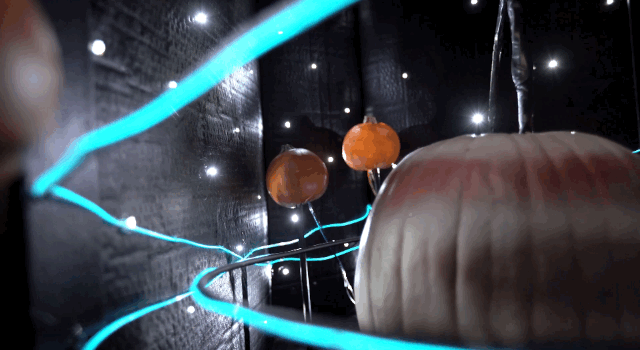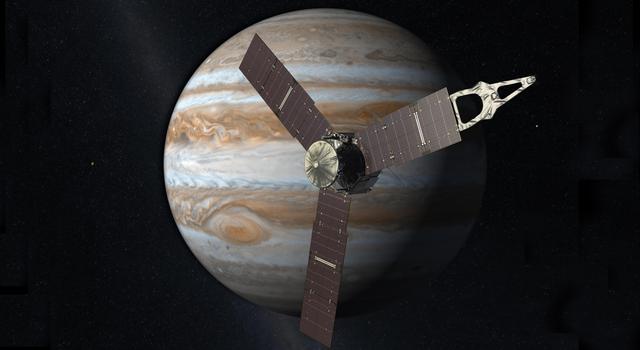project
Make a Jupiter Orbiter
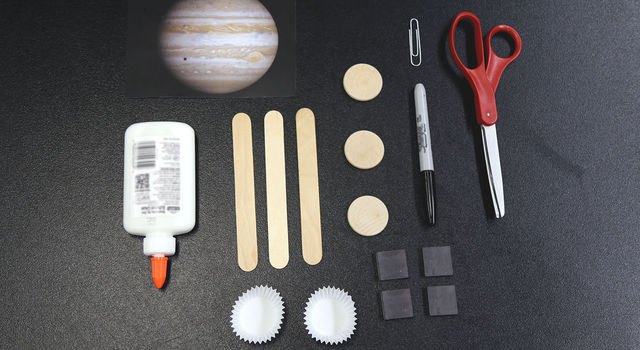
Materials
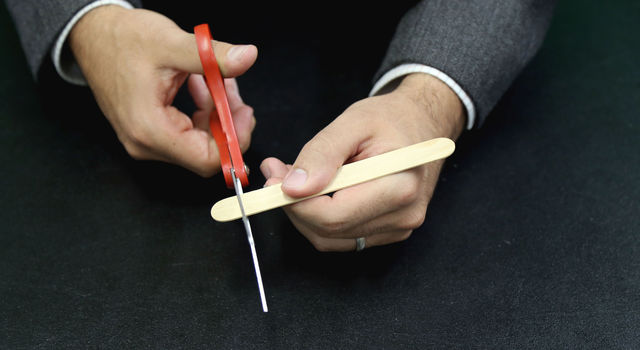
1. Cut one popsicle stick
Use scissors to cut a small piece off of one of the popsicle sticks.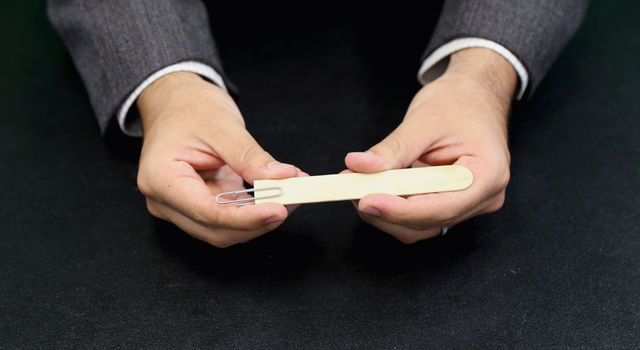
2. Attach the paper clip
Attach the paper clip to the edge of the popsicle stick that you just cut.
The paper clip is your spacecraft's magnetometer. On the Juno spacecraft, the magnetometer is a tool that studies the magnetic field around Jupiter. Scientists study Jupiter's magnetic field to figure out what the planet is like inside.
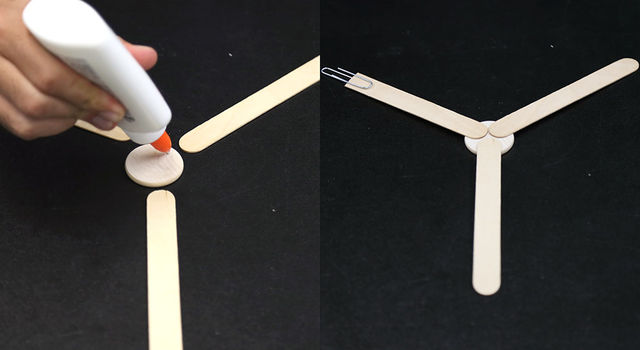
3. Glue on the popsicle sticks
Place small dots of glue on one of your wood circles. Attach all three popsicle sticks (including the one with the paper clip) to the wooden circle so that they are spaced evenly around the circle.
The popsicle sticks are your spacecraft's solar arrays. Solar arrays use energy from the sun to give spacecraft the power they need to fly and keep all their tools working. Juno's solar arrays had to be extra big because the spacecraft was traveling so far from the sun – millions of miles away. They are so big that it would take more than 1,200 sheets of paper to cover them! But their size helped Juno break a record. It's now the farthest sun-powered spacecraft ever.

4. Glue on another wood shape
Glue another wood circle on top of your spacecraft to hold the popsicle sticks in place.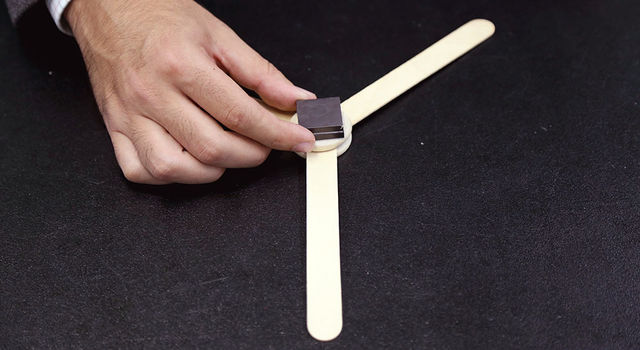
5. Attach the magnets
If your magnets have a sticky side, peel off the covers on two magnets and stick them on the top of your spacecraft. If your magnets are not sticky, you can use glue or tape instead.
Now your spacecraft has a body that holds the tools you'll need to explore Jupiter. On Juno, these tools are inside a thick case that protects them because the space near Jupiter is very dangerous. The body of the spacecraft has a camera and tools that help scientists figure out what's around and inside Jupiter.
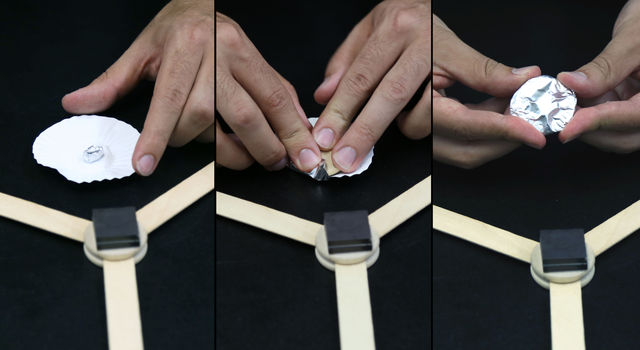
6. Make the top of your spacecraft
- Flatten one cupcake tin.
- Take the other cupcake tin and roll it into a ball.
- Place the rolled up tin on top of the flattened one.
- Put a wood circle on top of that.
- Fold the edges of the flattened tin over the wood circle.
- Flip the whole thing over and shape it into a wide, short cone.
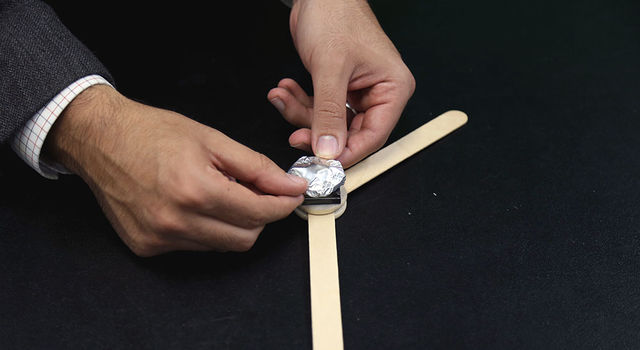
7. Glue on the top
Glue the top to the body of your spacecraft.
On top of the spacecraft is the antenna, which lets us talk to the spacecraft from Earth. When Juno flies close to Jupiter, it uses its antenna to detect the planet's gravity pulling on it. Scientists study those pulls to figure out how Jupiter spins and what might be happening inside it.
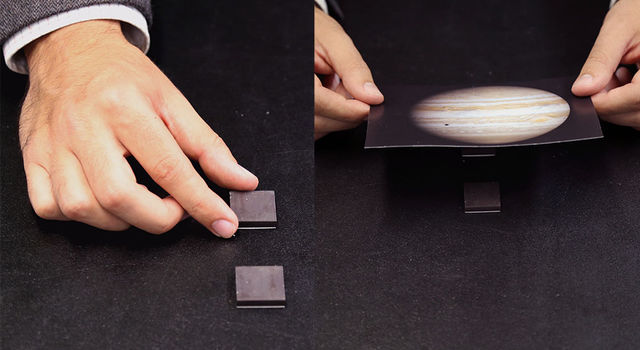
8. Hide the magnets under Jupiter
While the glue on your spacecraft dries, ask a friend, family member or teacher to hide the rest of the magnets under your picture of Jupiter. No peeking!

9. 'Fly by' Jupiter to find the magnets
Once your spacecraft is dry and the magnets have been hidden, move your spacecraft in a sideways motion over the picture of Jupiter – but don't touch the paper.
Use your marker or sticky arrows to mark the areas where you feel your spacecraft being lightly pulled toward the picture.
Once you think you've guessed all the places where your magnets might be, lift up the picture. Do the marks on your picture match where the magnets are?
Repeat as many times as you like, hiding the magnets in different places. Get your friends, family and classmates to try guessing, too!
The real Juno spacecraft doesn't use magnets. But the pull you feel when your spacecraft gets close to one of the hidden magnets is like the pull Juno detects when it get close to Jupiter. Scientists already know that those pulls are strongest near the top and bottom of Jupiter (its poles). But there are tiny changes in that strength all over Jupiter that can help scientists uncover some of the planet's many secrets.
10. Explore More!
Find out more about how and why the Juno spacecraft is exploring Jupiter:
This activity was adapted from a model created by NASA Solar System Ambassador Susan Morrison.







